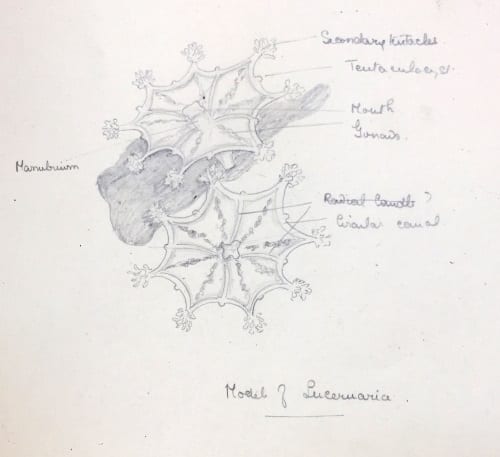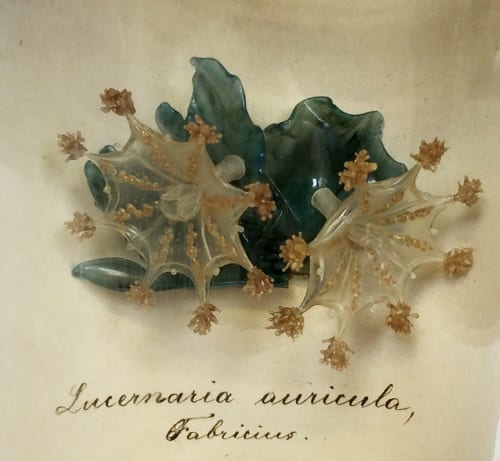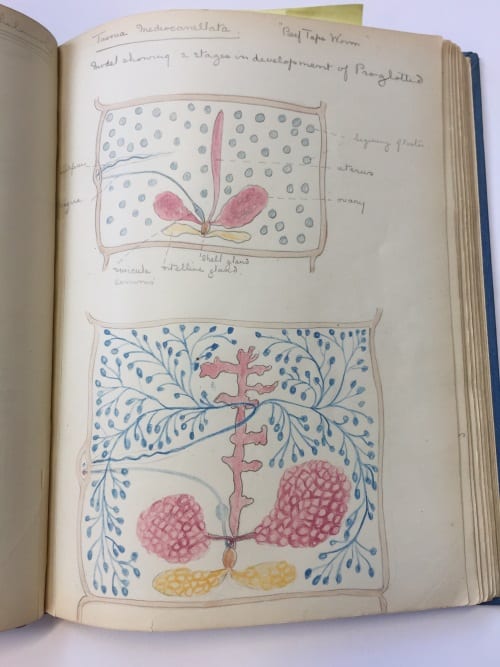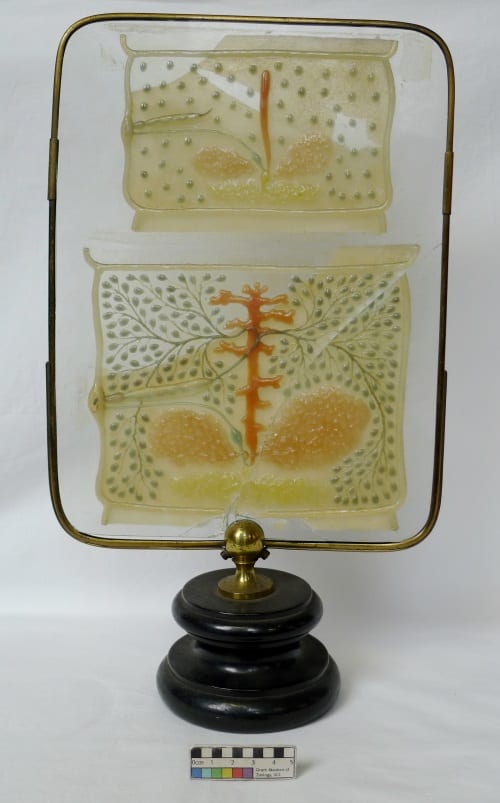Specimen of the Week 286: The Notebook Models
By Tannis Davidson, on 7 April 2017
As is often the case, it is difficult to choose a single specimen to highlight in this blog. The Grant Museum has 68,000 specimens and each one has a story to tell. Sometimes the stories are connected and link specimens together in unexpected ways, which is why this week’s focus is on a quartet of specimens, rather than one.
At first glance the four specimens may not appear to have much in common. One is a glass jellyfish, two are wax models of different parasitic worms and the other no longer exists. What they do share is a common history of use, artistic beauty and legacy. This week’s Specimens of the Week are…
**The Notebook Models**
The Grant Museum is fortunate to have several student notebooks which were used in the Practical Zoology courses at UCL over the years. They are full of illustrations of museum specimens and diagrams of dissections undertaken in lab practicals. They are a fascinating record of object-based zoological teaching and often prove to be a useful resource for documenting use of specimens and determining how long they have been in the collection as most of the notebooks have dates, some have names of students but all of them showcase identifiable Grant Museum specimens.
Model #1: Haliclystus auricula, also known as the ear-stalked jellyfish is a small (2.5cm) funnel-shaped jellyfish found on algae and eelgrass in shallow water throughout the northern hemisphere 1. These delicate animals have eight arms (each tipped with tiny clusters of 100 tentacles) radiating from the mouth connected by a thin membrane.
The specimen depicted in the notebook illustration is a Blaschka glass model of this species, produced by renowned Czech jewellers Leopold and Rudolph Blaschka around 1875. As with all the Blaschka models, it was produced in order to recreate the fragile form which would otherwise be problematic to display (invertebrates have to be preserved in spirit and gradually lose their shape and colour).
Model #2: Taenia saginata, commonly known as beef tapeworm, is an intestinal parasite. The larvae develops in cattle and through beef consumption, is passed on to humans (the definite hosts of the adult worms). The parasite is found anywhere beef is eaten and it is estimated that an estimated 40-60 million people are infected 2. Understanding the life cycle of parasitic worms has obvious implications for human health and as such, were widely studied in zoology following Rudolf Leuckart‘s pioneering studies on parasitology from 1850-1898.
The specimen illustrated below is a wax on glass model showing two stages in the development of a proglottid (each segment of a tapeworm which contains both male and female reproductive organs). It was made around 1880 by model maker Rudolf Weisker who, working closely with Leuckart, created numerous wax models of parasitic worms based on Leuckart’s research.
Model #3 and #4: Fasciola hepatica, the common liver fluke is a parasitic flatworm which causes Fasciolosis – a disease affecting humans, but primarily cattle and sheep. Like Taenia saginata above, this species was studied by Leukart and modelled by Weisker. Two different models of F. hepatica were created by Weisker – one showing the reproductive system, and the other showing the digestive and nervous system.
The Grant Museum originally had both of these models (read more about the reproductive system model here), as indicated by the accession register, two images from 1887 (showing the models in the zoology lab) and the illustration in a student notebook from 1906:
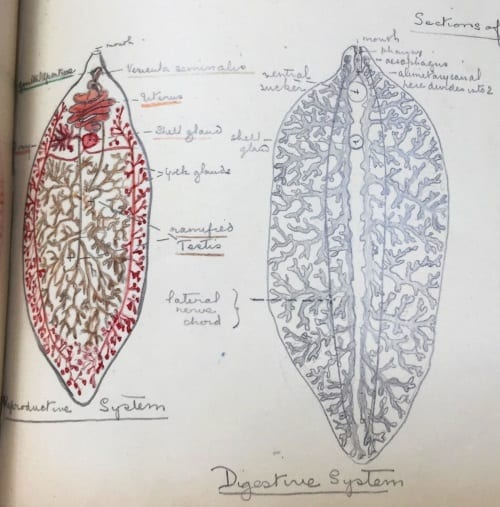
Illustration of LDUCZ-D44 Fasciola hepatica model showing reproductive system(left) and now lost F. hepatica model showing digestive system (right).
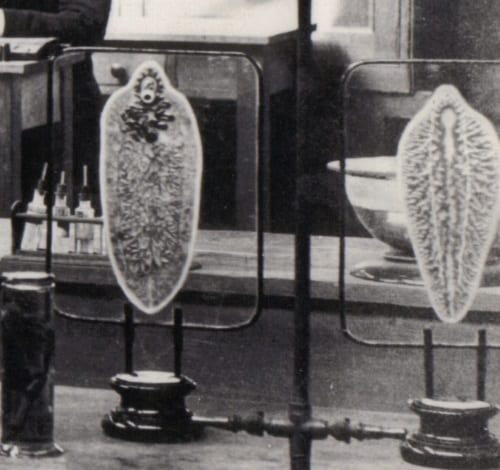
Detail from image of Lankester’s Long Course in Zoology 1887 showing both Fasciola hepatica Weisker wax models LDUCZ-D44 (left) and now lost model of digestive tract (right).
If you’ve enjoyed matching-up-the-specimen-to-its-illustration, you’ll soon be able to see more examples in UCL’s forthcoming Spotlight Exhibition in the Octagon Gallery in the Wilkins Building which opens in early May 2017.
Tannis Davidson is the Acting Curator at the Grant Museum of Zoology
References
- Collins, Allen G. 2010. Haliclystus auricula (Rathke, 1806).
- Eckert J. 2005. “Helminths”. In Kayser, F.H.; Bienz, K.A.; Eckert, J.; Zinkernagel, R.M. Medical Microbiology. Stuttgart: Thieme. pp. 560–562
 Close
Close



